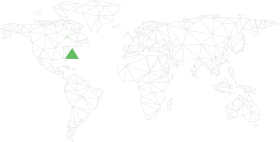Do you know AI is combating illegal opioid trafficking and prescription-based opioid abuse?
![]() by Team Assurety
by Team Assurety
Published on August 12, 2024
5 min read
Unveiling the Future
Part 06 of a ten-part series on Leveraging AI to solve complex business problems.
As part of our commitment to keeping you informed on the latest advancements in AI technology, we’re excited to share our article in the AI Insights series.
Introduction
The opioid pandemic has hurt humanity in the worst way, the vulnerable were hurt the most as this addiction led to a massive loss of life. Many lost their friends and family members and those in rehabilitation centers went through a great struggle to rid themselves of this addiction. World governments came together to fight against these illicit substances and several initiatives were started. One way of getting opioids was through international trafficking using postal and cross-border fraud, the other was opioids through prescriptions. Both were dangerous; however, a more potent version was available through international trade ordered through the dark web.
AI in combating prescription-based Opioids
These are prescribed medications that treat severe pain after operations, injuries, or cancer. These opioids have a great probability of developing addiction in patients and carry a significant chance of abuse and misuse. AI plays a vital role in fighting the abuse of prescription-based opioids.

Firstly, AI can analyze large data sets such as electronic patient records, prescription data, patient history, and prescribers’ patterns to predict the risk of addiction. This early interference results in the prescription of non-opioid medications. Secondly, AI helps in developing non-opioid pain administration techniques by investigating patient responses to different treatments. Machine learning algorithms predict how patients will respond to different medications. This analysis reduces the involvement of opioids and the risk of addiction. In the US, DEA utilizes insights produced by AI to identify physicians and pharmacies involved in the prescribing and distribution of opioids. Furthermore, pharmaceutical companies are also using AI to develop new medications with lower addiction compounds by analyzing molecular structures and combining a wide variety of elements in different quantities.
AI in Combating Opioid Trafficking
Those patients who are even mildly addicted to opioids, when show signs of addiction are prescribed non-opioids-based pain relief medications. While some respond well, others look for illegal ways to source stronger opioids. This is where the dark web and opioid trafficking comes into play. Governments struggle with controlling the dark web due to its anonymous nature and complicated dark marketplace. In a few years, the dark web became the popular platform for buying and selling illicit goods including narcotics and opioids. AI with the help of the intelligent web (WEBINT) monitors these marketplaces with natural language processing and focuses on keywords. In addition, AI increases the accuracy in finding and blocking these sellers, and finding dark web portals, where drugs are peddled. Identifying and disrupting such platforms and networks are important for blocking the dark web supply chain. Even if a purchase on the dark web goes through, AI enables tracking, distribution, and delivery of such parcels by evaluating cargo data, shipping routes, payment modes, and purchase frequencies. Once an anomaly is detected that mimics historic patterns of fraudulent activities such parcels are flagged, separated, and checked.
Case Study Highlight: Opioid and Contraband Detection and Enforcement
- Problem: Addressing the opioid crisis in Canada by detecting and intercepting illegal shipments of drugs and arms.
- Solution: Implementing a risk-based program using data analytics and machine learning to predict and intercept contraband.
Conclusion
AI provides border agencies, logistic companies, drug enforcement agencies, and other institutions the means to not only process large amounts of data but also predict the suspicious nature of parcels that may contain illicit substances. AI and its capabilities have reduced the speed of opioid addiction in masses by stopping opioids from ever entering the borders sourced from the dark web and illegal channels. While prescribed opioids irregularities are also detected and reported efficiently by AI to identify misuse and addiction. Finally, AI is also helping pharmacies develop new medications that are not based on opioid substances, yet providing pain relief to patients.
Upcoming in the series
Part 07: Propelling your Business with Artificial Intelligence: Top 10 Strategic Milestones
 Part 01:
Part 01: 